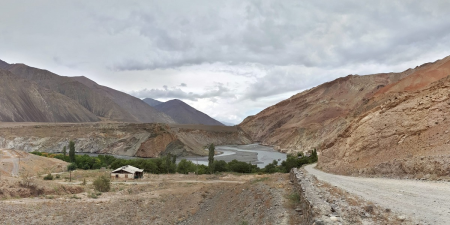SZTE researchers to start on an expedition to Tien Shan and Pamir mountains
Two professors of the Institute of Geography and Earth Sciences of the University of Szeged, Dr. György Sipos and Dr. Károly Barta, and one of their students, Ákos Vincze, will set out on a unique expedition to the western Tien Shan and the central part of the Pamir Mountains — the University announced in a press release.
The research team will leave Hungary on August 18 and return on September 14. The expedition team will work in an area researched by great predecessors, such as the Hungarian geologist Gyula Prinz, in one of the most intensively rising regions on Earth and collect samples in high altitude conditions to answer hitherto unsolved geomorphological questions.
— The planned research focuses on the fluvial terrace formation of the western Tien Shan and Central Pamir, as well as quantifying the rate of long-term degradation. Two river and valley systems, the Zeravshan River in the West Tien Shan area and the Bartang River in the Central Pamirs were selected for the research. These are located in areas where the rate of recent uplift, the specific runoff, and the surface lithology are also very different, — said Dr. György Sipos, head of the Department of Geoinformatics, Physical and Environmental Geography of the University of Szeged.
The main goal of the research is to investigate the rate of incision of the above rivers, by determining the age of the material of the so-called fluvial terraces formed during their incision. All of this allows quantifying the spatial differences in elevation, which in turn provides valuable information for predicting the earthquakes that regularly hit the region.
In addition, the tests will also cover the cosmogenic isotope and luminescence analysis of the mineral sediment grains found in the river beds, which can be used to determine the extent of the degradation of the mountains. The fragmentation and weathering of the material of the intensely rising mountains extract a significant amount of carbon dioxide from the atmosphere, which is an important factor in terms of long-term climate change. Accurately documented, measurement-based data are lacking in this area, which is why this research can be significant on an international level.
The Institute of Geology, Earthquake Engineering and Seismology of the Academy of Sciences of the Republic of Tajikistan, as well as Solmaz Mohadjer from the University of Tübingen — who recently participated in an international conference in Szeged, and has significant local knowledge — will be involved in the organization and successful implementation of the expedition.
Professional support is also provided by the University of Lausanne in Switzerland and the University of Wollongong in Australia. The results of the research can be widely used in the future, and not only in the form of publications since more students are planning to be involved in laboratory tests, and the generalizable results will also be applicable in education. The research started in December 2022 and will end in November 2025.
Photo by Solmaz Mohadjer solmazmohadjer.com via the University of Szeged
